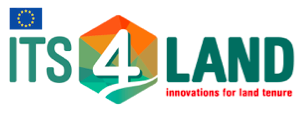How are we communicating?
Overall
The project deliverables will be communicated using the complete range of innovative measures during and after the project. Primarily, the project website will serve user-group-specific outputs and communications via specialized sections on the website and social media accounts. However, national and international press are used as a broadcast mechanism. Conventional trade shows, seminars, conferences, and journal publications also are utilized.
End-Users and Beneficiaries
For East African networks and consortium members, linkages to grassroots NGOs, provide important communication channels. However, the consortium and staff are recognized specialists in East African pastoralism research and policy development; UT, INES, BDU and TUK maintain strong links through the East African Land Administration Network (EALAN); and INES, BDU, and TUK also maintain excellent connections with their respective government ministries, civil society, smallholder communities at the local level and the research sector. These links informed development of the proposal development and subsequent articulation of project demands. Outside workshops and training sessions, telephone, email, and a 24/7 blog will provide communication.
Research Community
Regarding linking with the research community, the project will utilize and develop data sharing, dissemination, and feedback mechanisms amongst research agencies involved with land tenure recording through the needs analysis (WP2) and design activities (WP3,4,5,6). These will include use of conferences such as FIG events, the World Bank conferences series, and internationally recognized peer-reviewed academic journals – however, more timely communication will be enabled via the project website and existing social media accounts. Other interactions will be inspired through the emergence of the PhDs candidacies and subsequent assessments.
Commercial Sector
Where (and if) elements of its4land are deemed patentable; consortium partners will be encouraged and supported to seek patents. Linkages will be fostered with R&D geospatial technology companies (e.g. ESRI USA, Trimble) to support further commercialization of the innovative data capture concepts. These actors will be invited to comment on technical deliverables. Further, data, maps, descriptions of selected study areas, will also be made publicly available by various means (e.g. blog, geoportal, hardcopy). Pilots and demonstrations will be publicized in trade shows, industry events, land sector media, and industry websites.
National Governments and NGOs
the project will: invite actor contribution to a number of initiatives including joint book development; publish of data, maps, and descriptions of study areas; provide kick-off, regular, and dissemination development and training workshops and policy influencing meetings to ensure important face-to-face interaction; deliver project outputs in a variety of formats for use in government policy making, government administration, and civil society activities – including hardcopy, softcopy, and online: manual, maps, toolkits and annual reports (via the geoportal, blog and other media).
African Land Tenure Actors
For the African land tenure sector, including SMEs and Investors, the project will: strengthen cooperative links with other African land administration via networks e.g. EALAN; involve these actors in the creation and disseminate project results in various formats (both toolkits and scientific work); and provide on-going feedback and discourse regarding project results in various formats e.g. blog, annual report.
International Sector
Regarding communications with the international land tenure sector, the project will: learn from and contribute to the international discourse on alternative land administration (including research and non- research actors) e.g. GLTN, FIG, World Bank, UN-Habitat, and FAO; learn of international innovations in land tenure recording e.g. GLTN; disseminate project results; provide discourse regarding project results through blog and annual reports.
EU Institutions and Public
The project website and public seminars act as a primary channel of communication: specific laymen areas will explain project deliverables and make them accessible. The relevance of the technologies and interconnectedness between EU and sub Saharan African land tenure issues will be made prominent. Press releases for national, EU, and international consumption will be released at key milestone points – for promotion of the H2020 program. Channelling to the website will occur via personal and institutional social media sites including twitter, youtube, and facebook.

Recent Comments